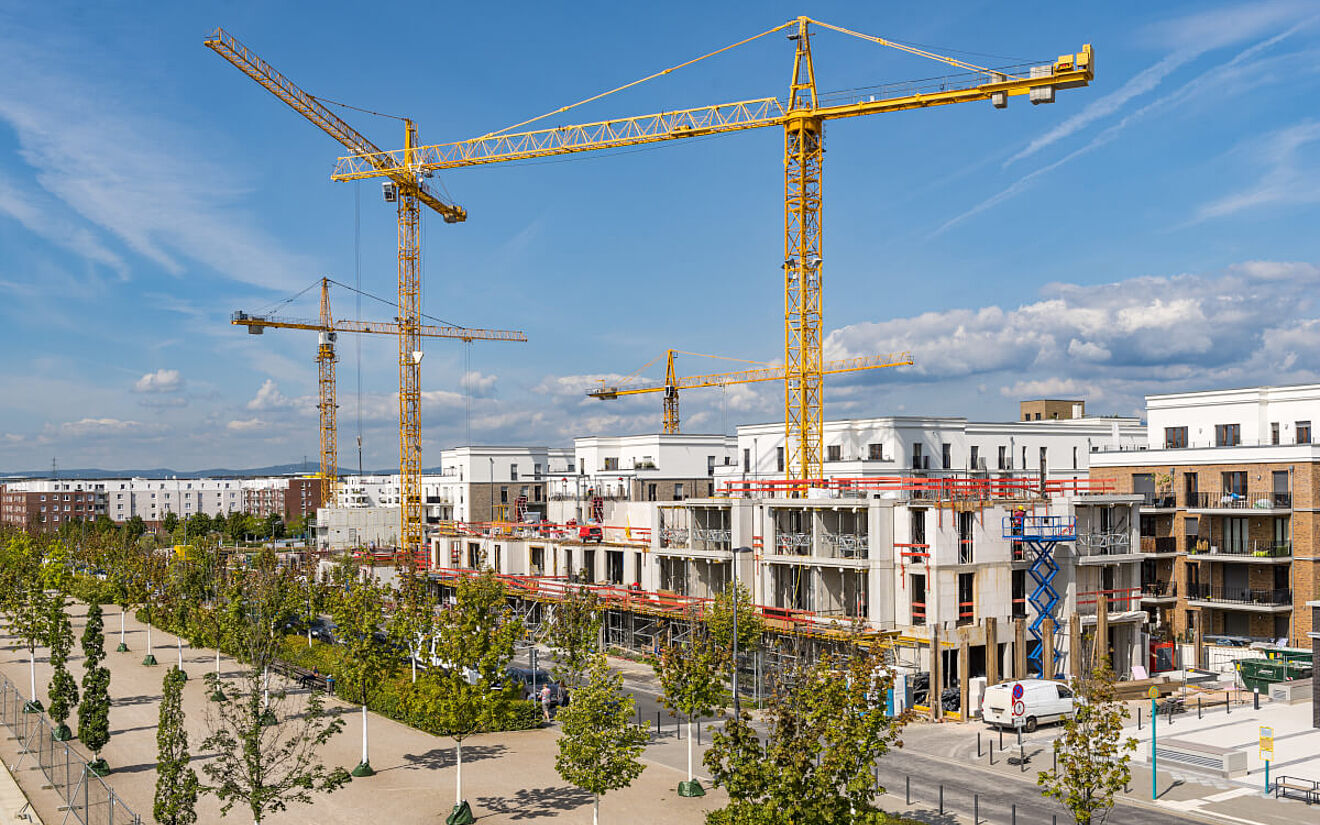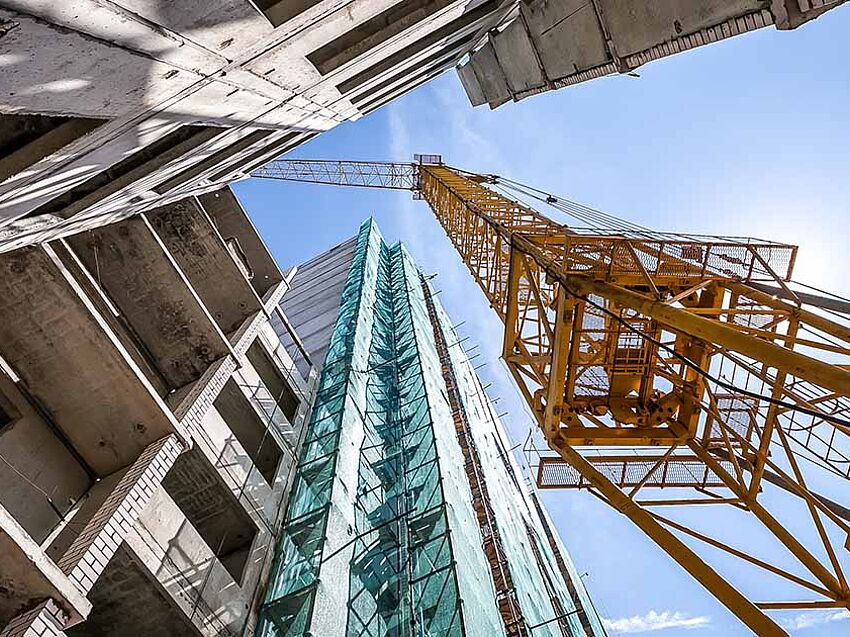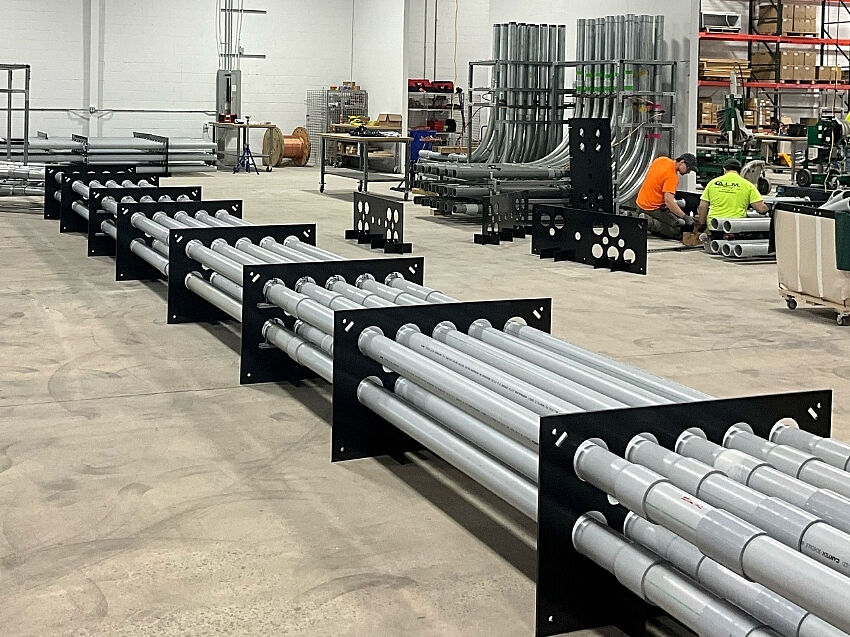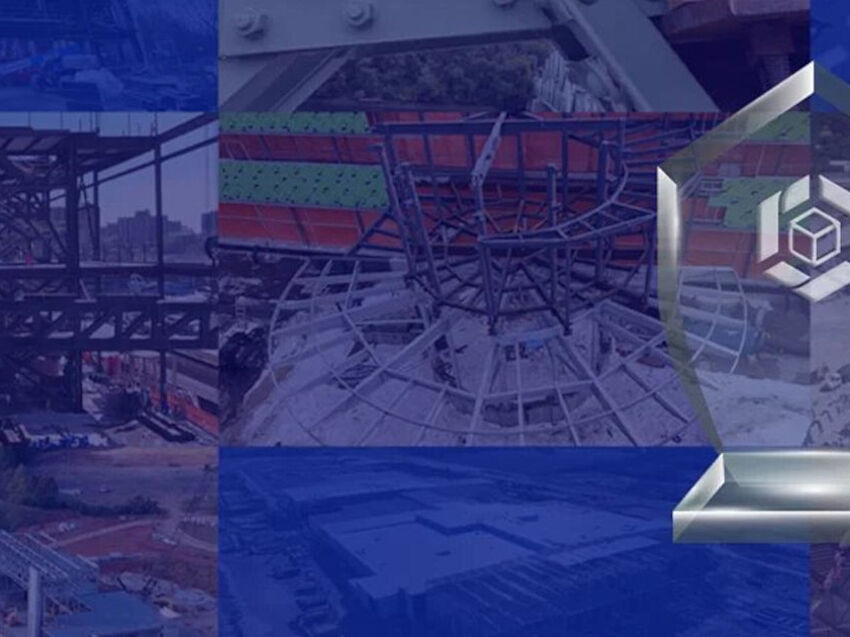Rising construction costs, skilled labor shortages, and the growing need for affordable housing are placing significant pressure on the construction and real estate sectors. Serial construction offers an efficient solution: standardized building methods, modular components, and industrial prefabrication help accelerate processes and reduce costs. For construction companies, it offers greater planning reliability; for investors, attractive returns; and for municipalities, faster access to much-needed housing.
Below, we explore how serial construction improves efficiency, its benefits, and the challenges that still need to be addressed.
What does serial construction mean?
Serial construction is an innovative building concept based on repeatable, standardized construction methods. Unlike traditional approaches, where every building is uniquely planned, serial construction uses prefabricated elements and repeatable processes to save both time and money. The concept has been refined in response to the rising demand for affordable housing and more efficient construction workflows.
Differences from modular construction
Serial construction is often equated with modular construction, but they are not the same:
> Serial construction uses standardized floorplans and construction methods that can be replicated. Components may be prefabricated or built traditionally.
> Modular construction, on the other hand, relies entirely on prefabricated room modules assembled on site.
In short: all modular construction is serial, but not all serial construction is modular.
Successful examples in Germany
Serial construction is increasingly being used in Germany for residential buildings, as well as educational and social facilities. A prominent example is the framework agreement by the GdW (Federal Association of German Housing and Real Estate Companies), which enables housing providers to access approved serial housing concepts. With the rollout of Framework Agreement 2.0, this approach is being further expanded to efficiently deliver even more affordable housing.
As a result, numerous affordable apartments have been built in cities such as Berlin, Hamburg, and Munich in a short time. The standardized construction processes enable fast, cost-effective implementation without compromising quality. Serial construction is also being increasingly adopted in the education sector. In Bremen, the Senate has decided to establish a pilot company for educational buildings to accelerate the construction and renovation of daycare centers and schools using modular and serial methods. This initiative aims to meet the growing demand for educational infrastructure more efficiently.
Faster, cheaper, better: the benefits of serial construction
Thanks to its efficiency, cost-effectiveness, and high quality, serial construction is an appealing alternative to traditional methods. Its benefits are rooted in industrial prefabrication, standardization, and optimized production workflows. Let’s look at three of the main advantages:
1. Shorter construction times through prefabrication
One of the key advantages of serial construction is the significant time savings. Many components – from walls and ceilings to façade elements – are prefabricated in factory settings. As a result, much of the weather-dependent work on site is eliminated. While conventional residential construction often takes 12 to 18 months, a serially built structure can be ready for occupancy within just a few months.
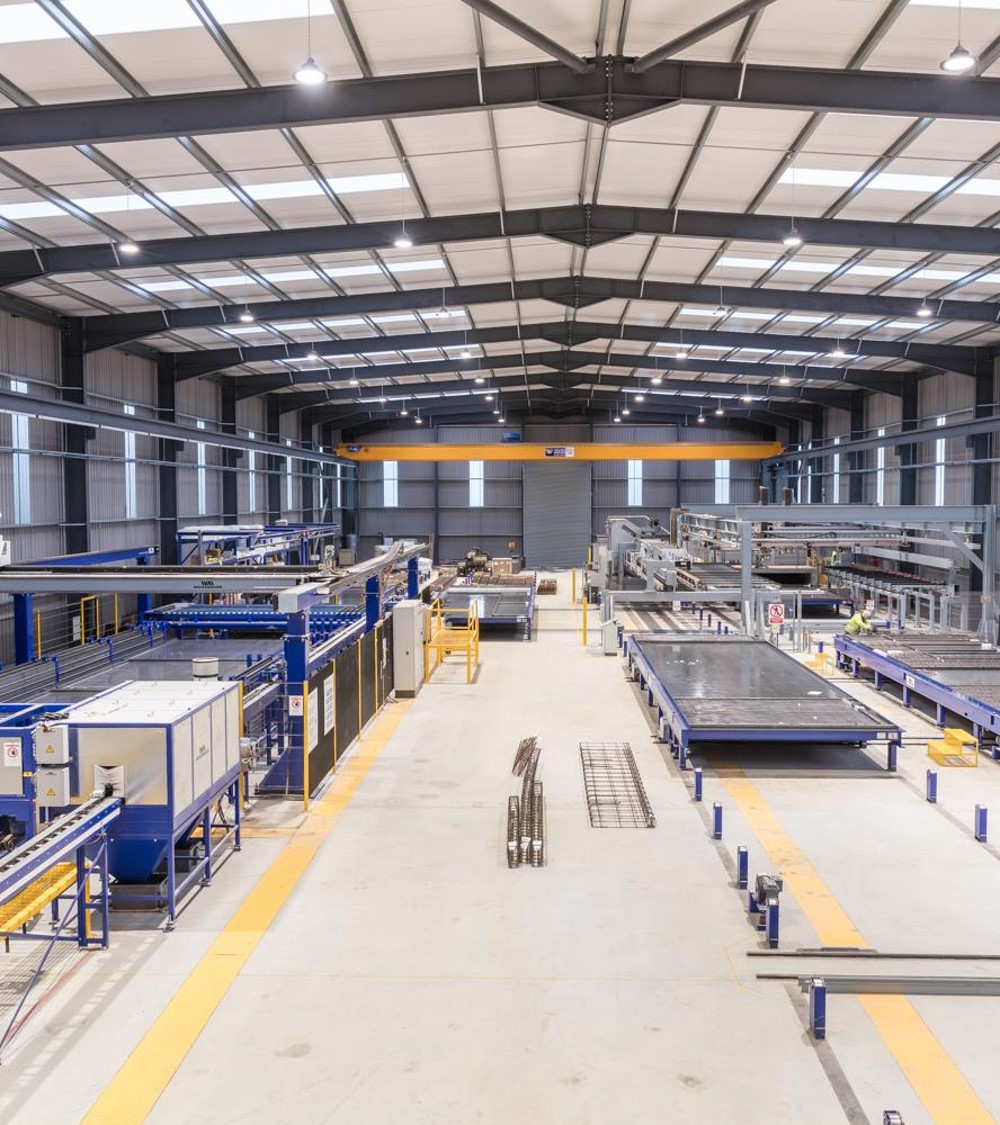
2. Cost efficiency through standardization
Serial construction significantly reduces building costs. By repeating standardized processes and using predefined components, both material and labor costs decrease. At the same time, industrial prefabrication minimizes planning errors and construction defects, which often lead to costly rework in traditional projects.
In comparison, in conventional builds, cost overruns are common and can range from 10 to 30 percent, depending on the project. According to a survey by the Federal Ministry for Economic Affairs and Energy, 52 percent of municipalities reported that costs for traditional projects exceeded the original budget.
Serial construction methods offer more precise cost forecasting and greater budget certainty. A 2024 study by the Friedrich Naumann Foundation for Freedom found that under optimal conditions, standardized planning and industrial prefabrication can lead to savings of up to 20 percent. The study highlights that reduced material waste, more efficient processes, and fewer corrections are the main contributors to these cost savings.
3. Higher quality through optimized production
Thanks to controlled manufacturing processes in specialized facilities, construction quality remains consistently high. Industrial prefabrication allows for precise production of components, minimizing sources of error and ensuring uniform quality. Modern testing methods and standardized procedures prevent material inconsistencies and inaccuracies that can occur in conventional construction due to weather conditions or manual variations.
One example of the high dimensional accuracy and verified material quality in serial construction is the use of prefabricated concrete elements with integrated insulation. For example, the "Thermowand" from the FEHR Group is an industrially manufactured double wall made of concrete with built-in insulation, produced with high precision and delivered to the construction site ready for installation. This approach reduces construction time and defects, improves energy efficiency, and increases the durability of the building.
Challenges and criticisms of serial construction
Despite its many advantages, serial construction faces several challenges that make implementation more difficult. Limited design flexibility, site-specific adaptation, and societal acceptance are key points of criticism that are frequently discussed.
Limited architectural flexibility
Because serial construction relies on standardization and repeatability, implementing custom architectural designs is more difficult. While traditional construction projects allow for a high degree of design freedom, serial buildings often have to rely on predefined modules and grid dimensions, according to an analysis by the construction industry. This can result in monotonous building structures that limit architectural variety.
The German Academy for Urban and Regional Planning (DASL) also points out that serial construction is often criticized for its repetitive appearance. As a result, cities and municipalities are increasingly calling for more flexible concepts that allow better integration into the urban landscape.
Modular building block systems could help enhance the design diversity of serial construction methods. According to a report from the Federal Institute for Building, Urban Affairs and Spatial Research (BBSR), such systems enable more flexible façade design and greater adaptability to different urban planning requirements. Open building systems make it possible to combine different materials and building components, allowing for unique architectural solutions.
Difficulty adapting to different sites
Serial construction enables fast and cost-efficient building processes. However, it reaches its limits when it cannot be flexibly adapted to local conditions. In educational construction, serial methods are being discussed as a solution to shorten construction times and reduce costs. The “Future Agreement” of the state government of North Rhine-Westphalia includes plans to simplify approval procedures and promote innovative construction methods. Still, three main challenges hinder implementation:
> Soil conditions: Geological differences – such as stable or unstable ground – require site-specific adaptations. This may necessitate additional foundation work or reinforcements, partially negating the benefits of standardization.
> Urban planning regulations: Many municipalities have specific development plans or architectural requirements that are not always compatible with standardized building types. Adjustments to façades or layouts can delay the construction process.
> Planning capacity: Municipalities often struggle with implementing new construction methods. According to a report by the North Rhine-Westphalia state parliament, many local authorities lack the staff needed to effectively support serial construction and accelerate approval processes.
These factors slow the widespread adoption of serial construction methods. In the long term, modular building systems and flexible planning approaches could help improve adaptability to different site conditions.
Public acceptance and preconceptions
Public perception of serial construction is often shaped by comparisons to post-war prefabricated buildings, which were seen as monotonous and uniform. Critics fear that standardized construction methods limit design freedom and architectural culture, and may not blend harmoniously into existing urban environments. According to a report by the BBSR, there are public concerns that serial architecture could lead to homogeneous urban neighborhoods.
However, modern serial construction projects demonstrate that standardization and aesthetic diversity do not have to be mutually exclusive. In the Franklin district of Mannheim, GBG built 352 social housing units using serial methods. By incorporating modular elements and sustainable materials, the project combined high living quality with energy efficient construction.
Recent research by the German Institute of Urban Affairs (Difu) also confirms that new serial construction concepts are increasingly focusing on flexible façade designs, adaptable floor plans, and high-quality materials to counter these preconceptions. Customization is also playing a growing role, enabling serial construction methods to better respond to a variety of urban design requirements.
Application areas for serial construction
From residential buildings to commercial properties and infrastructure projects, serial construction is being applied across more and more sectors. Thanks to its rapid build times, lower costs, and high quality, it is increasingly seen as a solution to the growing demand for housing and workspaces.
Serial housing construction: an efficient solution to the housing shortage
Serial construction offers key advantages for social housing and multi-family buildings:
> Fast completion: Housing can be made available in a short time.
> Cost efficiency: Industrial prefabrication can reduce construction costs by up to 20 percent.
> High build quality: Standardized processes minimize construction errors.
> Energy efficiency: Modern serial concepts use sustainable materials.
In Bremen, GEWOBA is using a wood-steel system with industrially prefabricated elements in its model neighborhood Ellener Hof. This approach accelerates construction and enables flexible housing concepts.
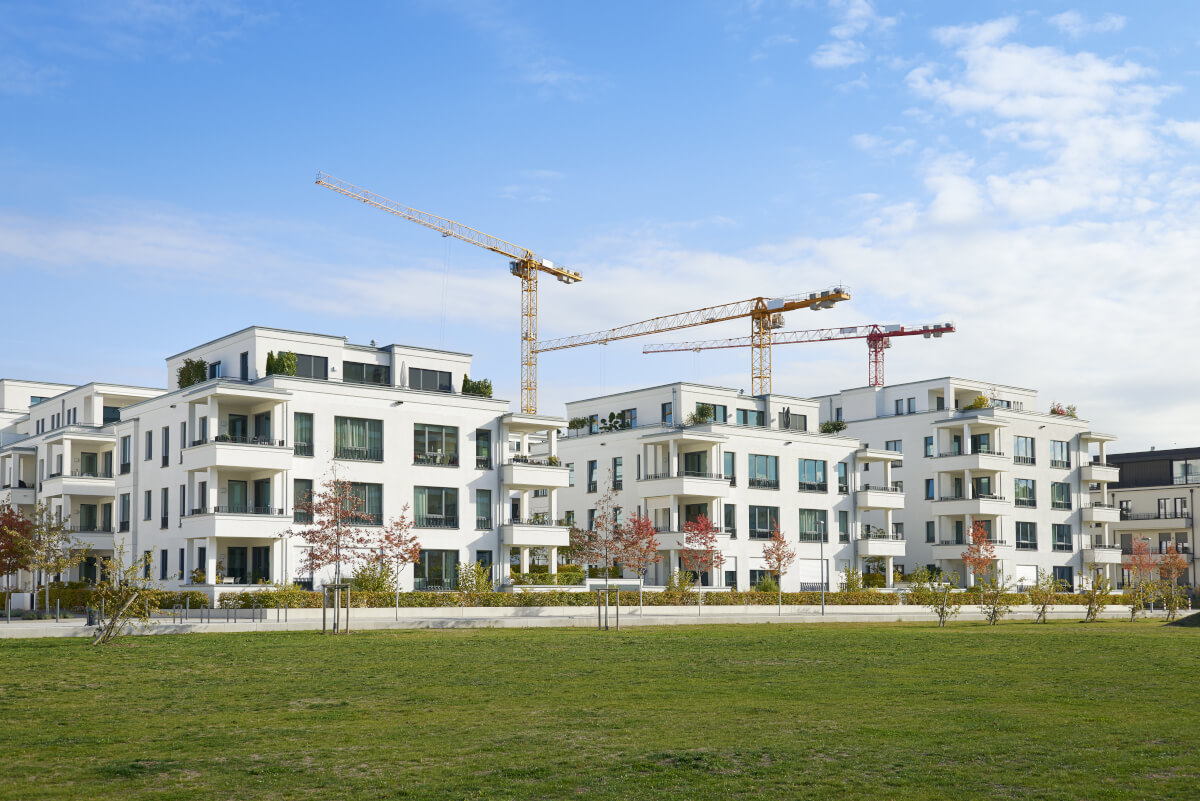
Commercial and infrastructure projects: schools, daycare centers, and office buildings
In addition to residential construction, serial building methods are increasingly being used for public buildings such as schools, daycare centers, and office buildings. The advantage is that modular concepts enable scalable and adaptable architecture that can respond to growing demand. A prime example is school construction in North Rhine-Westphalia, where the state government is increasingly relying on modular and serial construction to quickly accommodate rising student numbers.
Serial construction methods are also gaining traction in the office and commercial building sectors. ALHO Systembau has been delivering modular buildings for office and administrative use for years, characterized by short construction times and flexible floor plans. This allows companies to quickly and cost-effectively create new workspaces.
Future outlook: Sustainable urban development
Future building concepts are increasingly focused on resource-efficient materials, circular construction methods, and digital planning technologies. While serial construction is already valued for its efficiency and cost savings, its potential for sustainable urban development is becoming increasingly important. New developments are centered around three key areas:
> Circular construction and material innovations: The use of recyclable concrete, CO₂-storing materials such as wood, and biodegradable insulation materials is gaining importance. Modular concepts also promote the reusability of building components.
> Digital planning methods and automation: Building Information Modeling (BIM) and AI-supported design processes optimize material use and energy efficiency. Meanwhile, automated manufacturing reduces construction time and minimizes errors.
> Serial construction in urban contexts: Modern neighborhood solutions combine modular buildings with green infrastructure to ensure high living quality with minimal land use.
One example of this approach is the Plus-Energy District in Stuttgart-Bad Cannstatt, which combines sustainable materials with serial construction. Similar concepts are likely to be used more frequently in urban areas to promote resource-efficient and climate-friendly urban development.
Serial construction and sustainability
Combining serial construction methods with sustainable materials offers clear environmental benefits. Optimized manufacturing processes, resource-efficient material use, and energy-efficient building concepts significantly reduce the ecological footprint of the construction industry.
> Efficient material use: Reduces waste, supports circular economy.
> Optimized logistics: Lower transport emissions due to prefabrication.
>High energy performance: Better thermal insulation, lower heating/cooling needs.
For example, many serial homes meet KfW-40 or Passive House standards and integrate photovoltaics or heat pumps. Factory cured elements also reduce on-site moisture, cutting the need for energy intensive drying during construction.
Efficient use of materials through standardized production
Serial construction relies on industrial prefabrication, which minimizes material waste and enables efficient use of resources. Precision manufacturing reduces the amount of waste generated, while sustainable materials like timber modules or recycled concrete are used strategically.
> Reduced material waste: Modular production minimizes offcuts and lowers the amount of construction waste.
> Promotion of the circular economy: Reusable and recyclable building materials reduce the need for primary raw materials.
> Optimized logistics processes: Serial construction reduces transportation demands, as many components are delivered prefabricated, helping to cut CO₂ emissions.
These measures contribute to reduced raw material consumption and lower environmental impact during the construction process.
Energy efficiency through serial construction
Standardized construction processes make it possible to achieve buildings with high energy performance. Precise planning minimizes thermal bridging, which reduces the need for heating and cooling.
> High energy standards: Serial residential buildings often meet KfW-40 or Passive House standards, significantly lowering energy consumption.
> Integration of sustainable technologies: The use of photovoltaics, heat pumps, and optimized insulation techniques improves energy efficiency.
> Reduced energy demand during construction: Prefabrication reduces on-site moisture and the need for energy intensive drying processes.
These factors help ensure that serial buildings have lower operating costs over the long term and actively contribute to CO₂ reduction in the building sector.
Sustainable construction projects as role models
Modern serial construction projects demonstrate that sustainability and standardization are not mutually exclusive.
> Plus-Energy District Stuttgart-Bad Cannstatt: This neighborhood uses modular timber construction, meets the KfW-40 Plus standard, and incorporates renewable energy sources to generate more energy than it consumes.
> WOODSCRAPER Project Hamburg: This high-rise combines serial timber-hybrid construction with energy-efficient building technology, proving that sustainable serial construction is also viable for multi-story residential buildings.
These examples clearly show that serial construction plays a key role in climate-friendly urban development. They demonstrate that modern technologies and sustainable materials can enable an environmentally and economically attractive building approach.
Conclusion: Serial construction as an opportunity for the future
The construction industry faces major challenges – rising costs, housing shortages, and sustainability demands call for new solutions. Serial construction offers significant potential: shorter build times, lower costs, and high material efficiency enable the rapid and economical delivery of residential and commercial spaces.
Modern approaches show that serial construction can be both adaptable in design and sustainable. Digital planning, innovative materials, and energy-efficient technologies are helping to further develop this method. Therefore, it is set to play a central role in the future of sustainable urban development.
